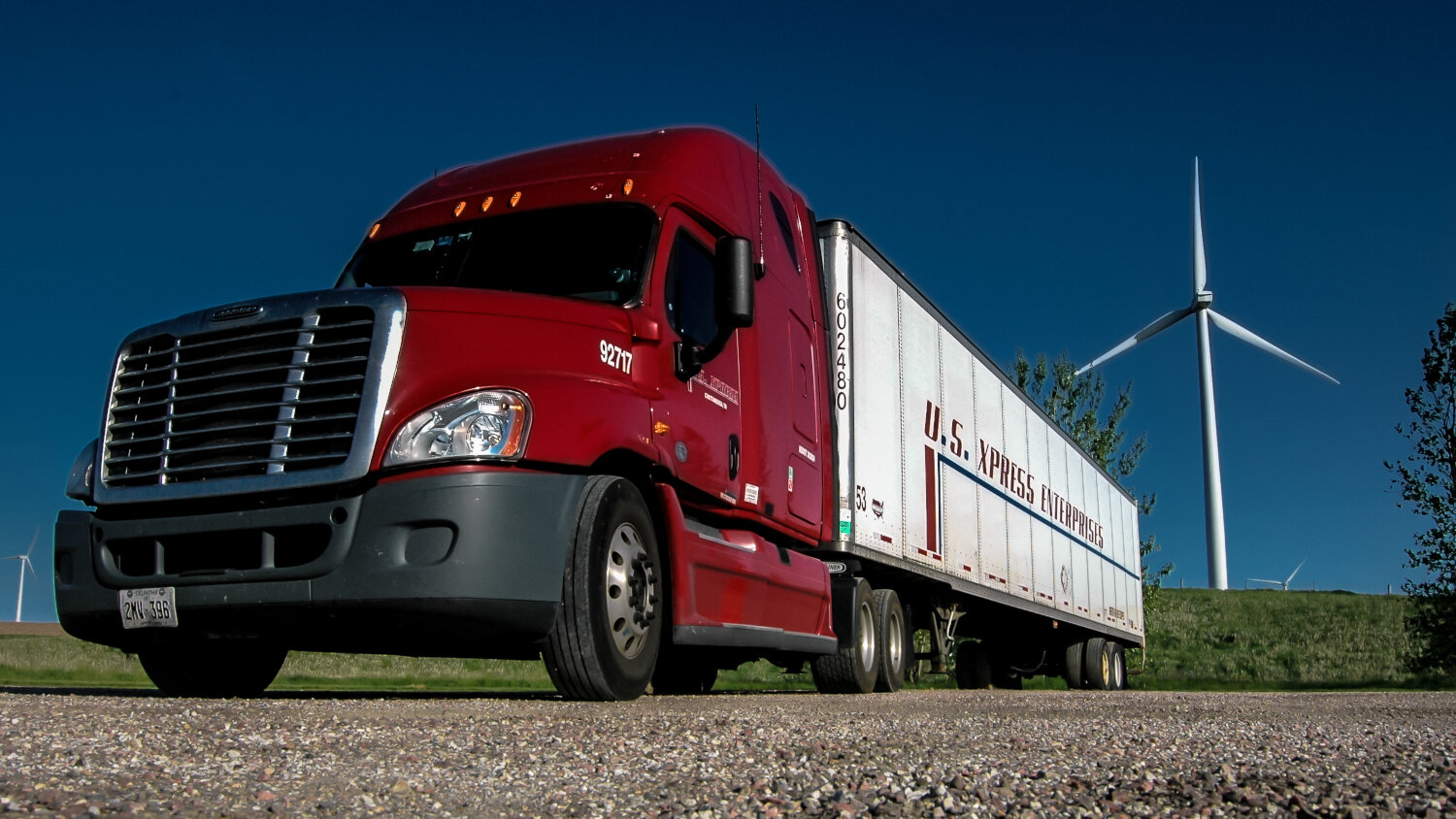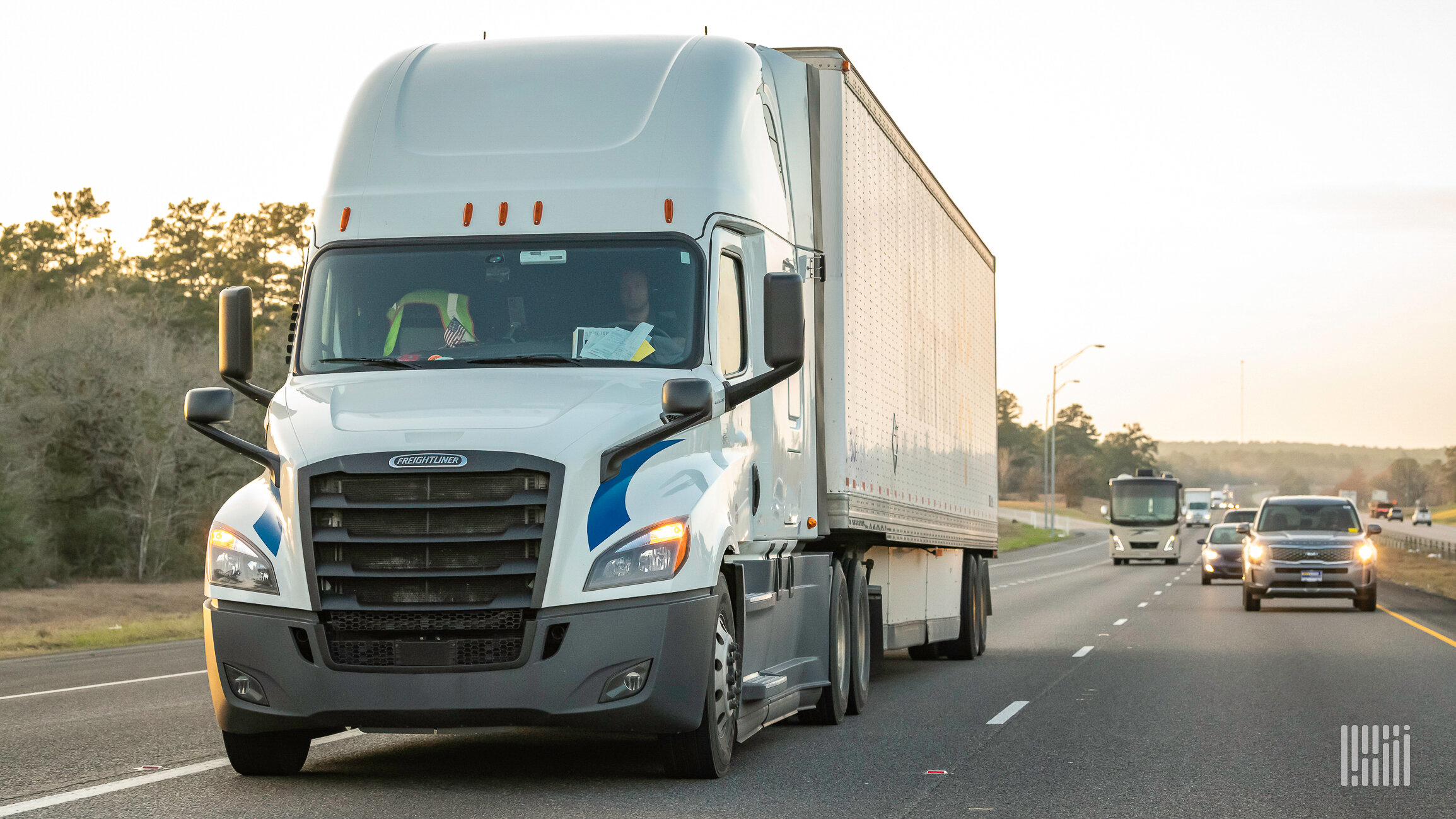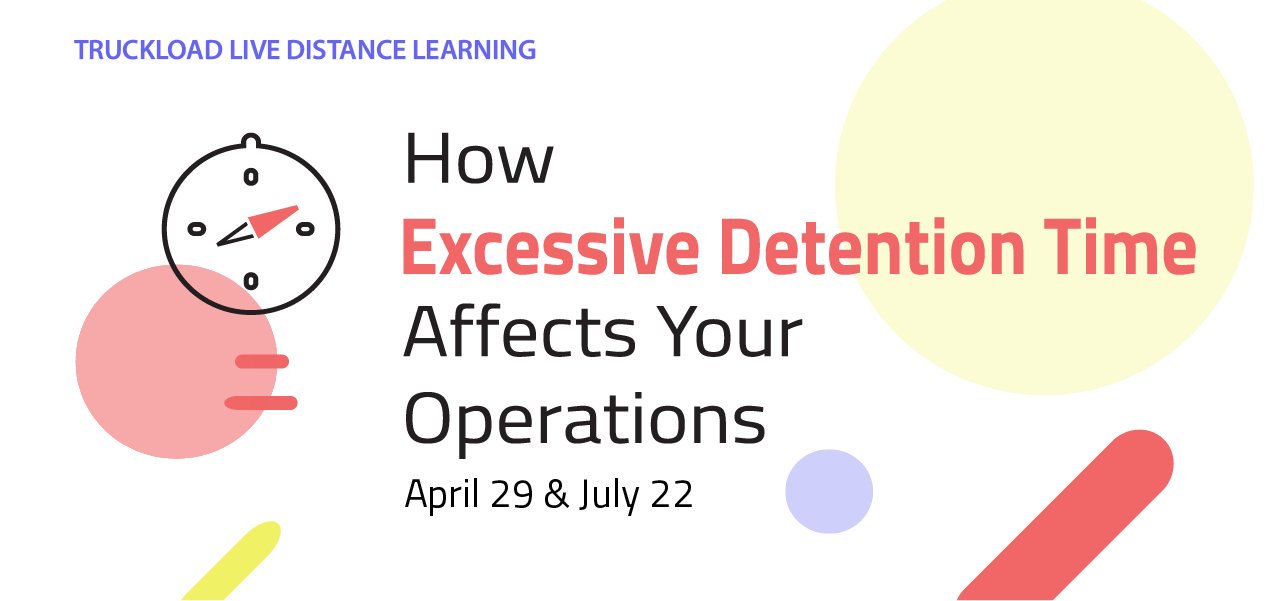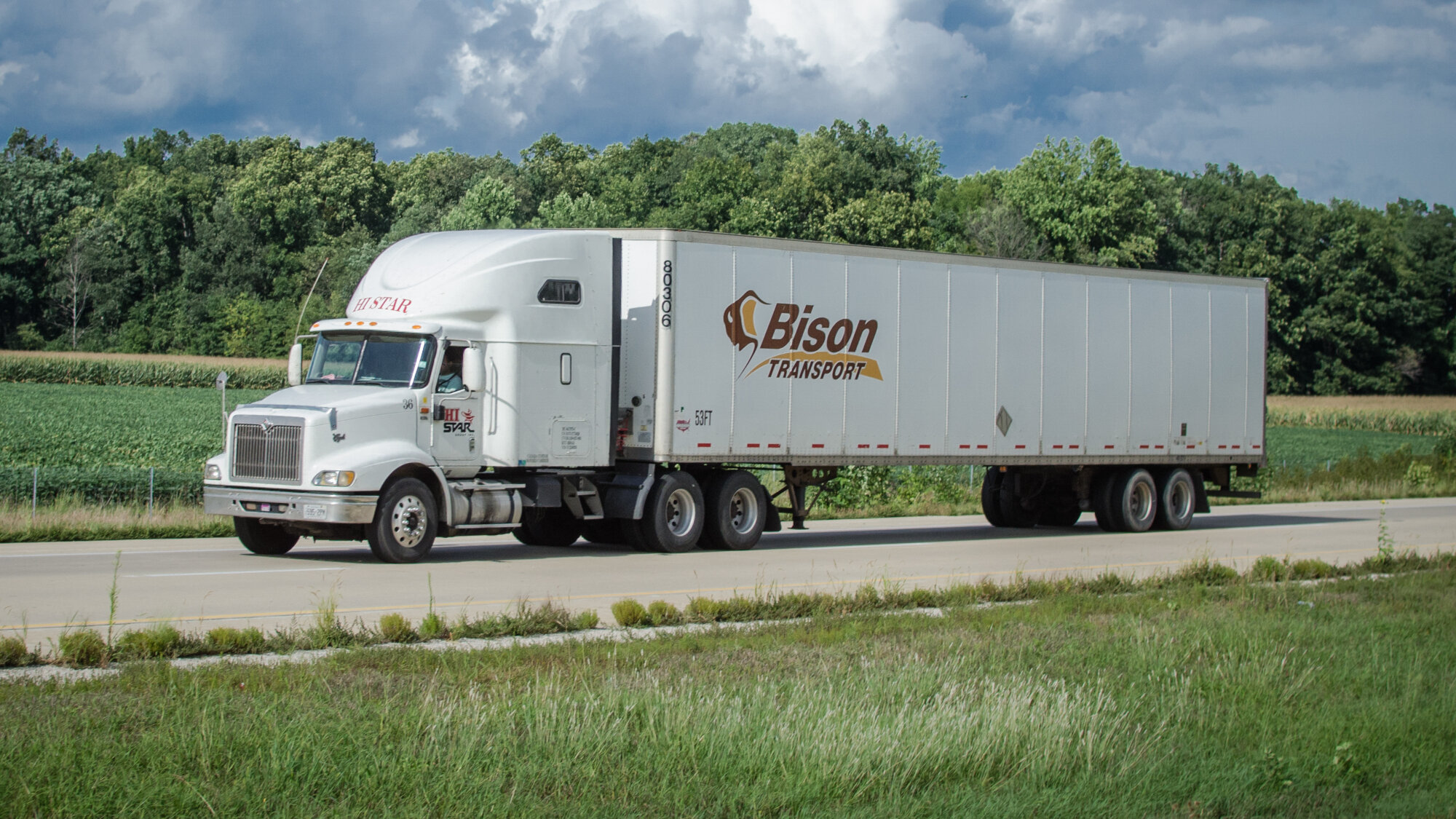
Demand for trucking services has “plateaued” in the last four to six weeks, though “we’ve not necessarily seen things getting worse,” according to the CEO of a leading national truckload carrier. (Photo: Jim Allen/FreightWaves)
Demand for trucking services has “plateaued” in the last four to six weeks, though “we’ve not necessarily seen things getting worse,” according to the CEO of a leading national truckload carrier.
Eric Fuller, CEO of U.S. Xpress, said at the Stephens Annual Investment Conference that while demand for freight services may have shown signs of flattening, the supply side of drivers ensures that freight rates will stay elevated.
“We’ve not necessarily seen things getting worse but they aren’t getting better, so things are staying very tight,” Fuller said in the virtual conference.
Fuller has always been one of the more keen observers and commenters on the state of the driver market, predicting early last year that the advent of the national Drug & Alcohol Clearinghouse would have significant impact on the supply of drivers.
That has come to pass, according to his estimates. Fuller told the conference that the clearinghouse has about 40,000 names in it, “and they’re pretty much out of the industry for the next couple of years.”
Fuller and others have talked previously about the closure of CDL schools as having contributed to the current squeeze on drivers. And while many have reopened their doors, Fuller said about 25% of them never returned and many of the ones still around are operating at 50% capacity. That has contributed to a drop of 100,000 to 125,000 fewer CDLs being issued than what would be considered normal.
“We think we’re probably going to exit 2020 with about 200,000 fewer CDLs than we entered the year with,” Fuller said. “It’s a big deficit to make up and I don’t see any sort of catalyst to make that up in the near future.”
That tightness in the driver pool is going to run into shifts in demand for trucking if the pandemic is pushed into history. Fuller noted that personal savings rates are extremely high compared to normal levels. If the economy begins to open up, there will be a shift toward the purchase of services such as restaurants. But some other sectors also might see growth, such as clothing, as workers return to offices. The end result, he said, is that “we think there will be some changes in the mix of how we get there, but we think demand will probably stay relatively flat to slightly up.”
The increase in driver pay as well as other cost inflation means that contract rates will need to move significantly higher in coming negotiations, Fuller said. Trucking rates have been through two recent cycles of rates that were “flat to down,” insurance rates are climbing “and we see driver inflation to the tune of 10%.” The truckload industry will need contract rates that are up 10%, “if not 15% to make this model work.”
Fuller spent a great amount of the call talking about the digital transformation at U.S. Xpress, highlighted by the creation of a fleet within a fleet called Variant. Variant’s operations are far more digitally driven than the rest of the U.S. Xpress operation.
But while discussing the Variant project, Fuller also took aim at some widely held beliefs, like the idea that an industry that is struggling can look to consolidation as a means to substitute for growth.
“Consolidation hasn’t worked,” Fuller said. Most companies that have put together big consolidations lose a big chunk of their driver force in four to six months. Consolidation is occurring in a market with “low margins, high turnover, high recruiting costs and manual processes,” Fuller said. The result is that most mergers aren’t successful and “nobody is growing at all.”
He used the word “scalable” several times, noting that he believes the Variant model is scalable in that the changes it implements can continue to be implemented over time and drive growth. It already has succeeded in having turnover that is less than 50% compared to a historical average at U.S. Xpress well over 100%, Fuller said. All of the other aspects of the more automated workflow and recruitment are “scalable,” he added.
Fuller said he saw the existing truckload business as having a looming threat from 3PLs that are going to become more asset-based. They may not be operating tractors, he said, but they will lease trailers or other equipment. “They are going to look more like an asset-based company and those companies (the asset-based carriers) are going to have to protect their market share,” he said.
It’s a scenario that Fuller said sets up a “tough” 10 to 15 years, with “scalability” of new processes the road to success.
As for Variant, Fuller said the company has added 50 trucks to the roughly 500 trucks that were in place when U.S. Xpress had its third-quarter earnings call.
The more automated aspects of Variant have allowed that part of the U.S. Xpress business to operate with about one-fifth of the office employees that would be needed for the same amount of tractors in the legacy model, Fuller said.
“Success (at Variant) is cannibalization of the legacy model,” Fuller said.
The company has gotten questions along the line of if Variant is so great, why doesn’t management convert the entire fleet to that model now? Fuller said he responds by noting that you need to scale slowly so management can see where the model “breaks,” if it does. If the shift is too fast, where that break point is can be impossible to discern.
And if the company finds that the break point is 650 trucks, a number Fuller clearly was using as an example, not as a target, “I’d still say it’s a success because we’d have 650 trucks that are far more profitable than what they had been doing previously,” he said.
On another note, Fuller said the company’s brokerage division, which has been a money loser in recent quarters, has operated at a break-even point for the last six weeks, which he attributed to changes implemented in that group as well.

















